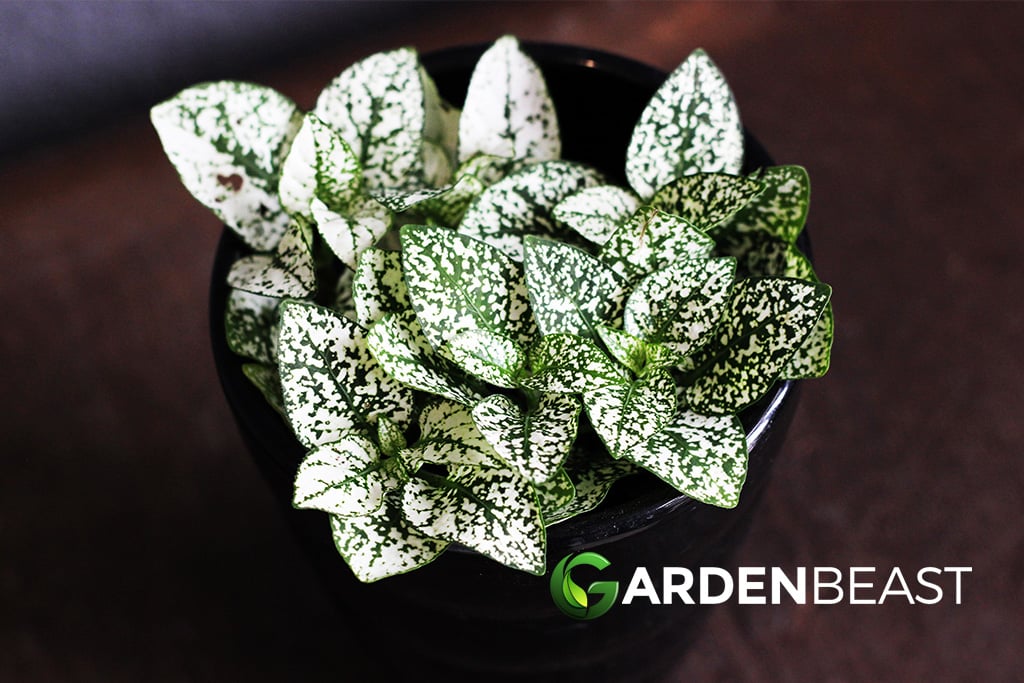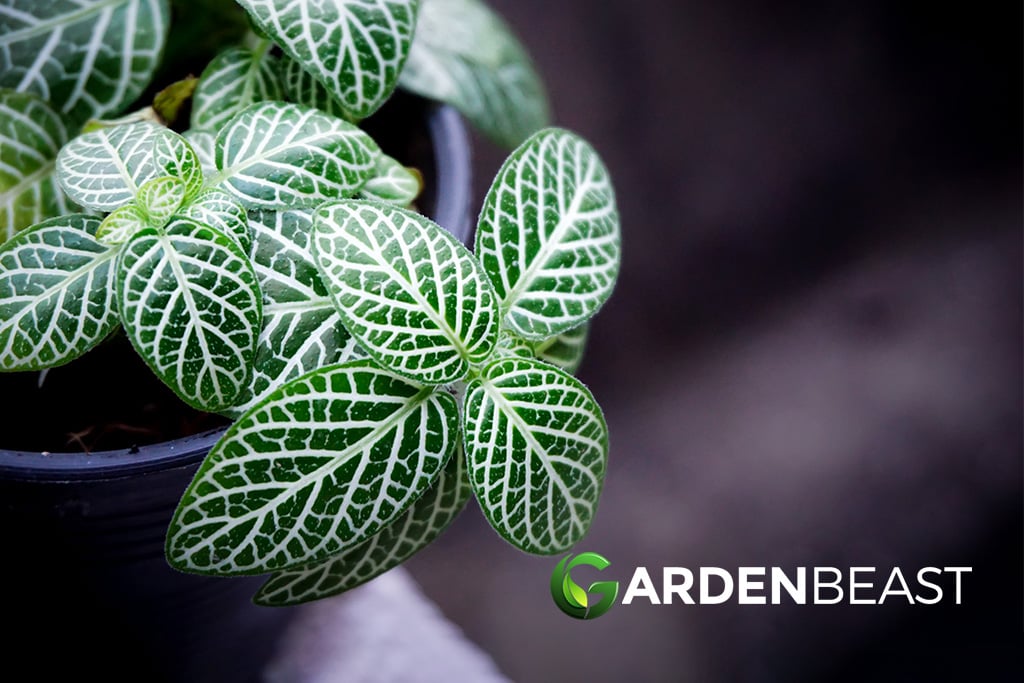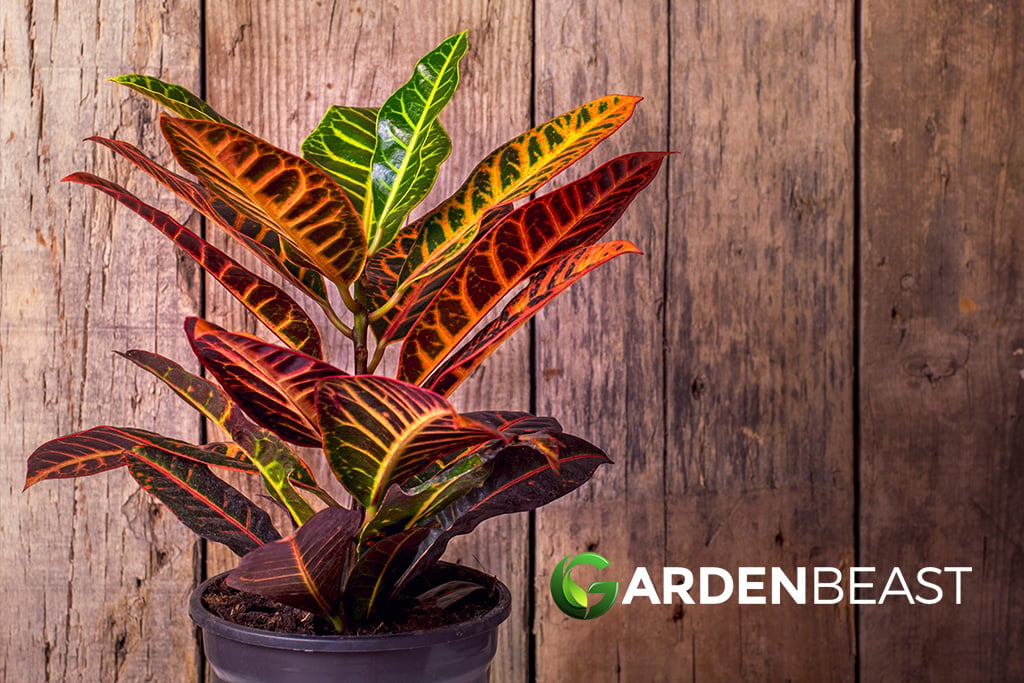Are you hoping to create a miniature version of Earth to keep on your desk at work? Do you have curious pets — like dogs, cats, and even birds — that tend to munch on any houseplant you try to grow, either putting the plant or the pet at risk?
Have you simply always loved the magical environment found in a terrarium, or are you fascinated by closed-loop perpetual terrariums that never need to be watered, because (no matter how tiny) they essentially create their own weather systems?
You’re not alone. It’s hard to argue with the fact that terrariums are pretty cool.
If you’re new to looking after plants, but you don’t want to take the easy way out by buying a ready-made terrarium, you’ll need to know what plants can thrive in these unique conditions — as well as how to create a varied ecosystem that will always be interesting to look at. We’re here to help.
What Is a Terrarium?
A terrarium is a small ecosystem you create for your plants, then. It’s filled with soil, sometimes small bugs, and with the water the plants need to sustain life.
In practice, terrariums are usually fairly small spaces sealed in glass jars or similar glass containers. They can have open lids, or sealed lids, in which case a terrarium can become a completely self-sustaining environment that will not ever need to be watered, as the terrarium will create its own water cycle.
A terrarium is a great choice for anyone who:
- Simply loves the uniquely attractive look of these tiny little gardens of Eden.
- Has pets who routinely threaten the life of any houseplant “left out in the open”.
- Is looking for a small garden to brighten up their workplace or study area — terrariums will keep your desk neat, but offer all the mental and emotional benefits houseplants generally have.
- Doesn’t have much space — many terrariums are very small, though these little worlds can certainly be much more expansive, too.
- Doesn’t really know how to grow and take care of plants, and is hoping for a little world that can sustain itself, without outside interference on their part.

Recognize yourself in any of those points? Maybe now’s the perfect time to get started with a terrarium of your own — and although many different kinds of plants can thrive in these environments, we’ve selected some of the very best for you.
Keep reading to discover what plants are easy to care for in a terrarium environment, while offering absolutely gorgeous features you’ll never get bored of admiring.
Best Plants for Terrariums
- 6 Different Small Terrarium Plants (2" Pot Size)
- |Order Multiple Sets for more Variety| Orders with 2x 6 Plants will receive 12 Different Plants. Orders with 3x 6 Plants will receive 18 different plants. Orders over 3 Sets may receive Duplicates.
- Easy Care Varieties
- Perfect For Terrariums/Fairy Gardens
- Low-Light Tolerant
- Reptile Terrarium Decorations include: 1 x Flexible Bendable Reptile Plant Leaves, 1 x Jungle Vine with leaves, 1 x large Plastic Hanging Leaves vine, 2 x mini Hanging Ivy Plants ( 2 style ), 6 x suction cups. Good for reptile habitat decorations, terrarium hanging, snake terrarium decorations.
- Easy to install: Use the included strong suction cups to secure the lightweight artificial greenery to the walls of your fish tank or turtle habitat, works wonderfully in any aquatic,even with the snakes crawling over them; it also works when used creatively in home decor and anywhere you want a touch of naturalness.
- Safe material: The Terrarium rattan greenery leaves were made from environmentally non-toxic plastic and the stems were made from iron wire. safe and sturdy,The willow vine is completely flexible with many shoots coming off the main vine,it creates a dynamic environment with fun hiding spots and exciting obstacles.
- Sturdy, waterproof and bendable,easy styling.They bend to fit your pet's enclosure while offering more support than a conventional vine. Great for Bearded Dragons, lizard, chameleons, tree frogs, geckos, tortoises, snakes and much more.Tropical rainforest cane.Easy to finalize the design,the modelling is protean.Creative DIY design use your smart ideas.
- The fake Terrarium plants add richness to the decoration of the crawling pet habitat, with leaves twining around the vine to make the decoration more realistic. Play with your ideas for DIY habitat decor modeling for your reptile pet.
- |6 Mini-Fern Plants| In cute 2" Pots for Terrarium / Fairy Garden builds or just to enjoy as house plants.
Last update on 2024-10-18 / Affiliate links / Images from Amazon Product Advertising API
Polka Dot Plant (Hypoestes phyllostachya)
There’s no denying how absolutely stunning the polka dot plant looks with its gorgeous deep green and pink variegated leaves that are sure to stand out in your terrarium!

The polka dot plant goes by many different names, including baby’s tears, freckle face, the flamingo plant, and pink splash. This unique plant is a herbaceous perennial and usually has a size of one to two feet (30 to 60 centimeters) wide and tall. It’s native to Madagascar and is pretty easy to grow, even for beginners.
The attractive leaves of the polka dot plant are usually green with many pink dots or splashes, making them an incredibly appealing option for those who love variegated leaves. Of course, polka dot plant leaves aren’t only limited to these colors, and some varieties can also come in spotted colors of white, red, purple, and white.
Let’s take a look at some of the things your polka dot plant might need when grown in a terrarium:
- Polka dot plants thrive in rich and well-draining soil, with an all purpose organic potting mix being a great choice.
- These plants will definitely benefit from regular moisture, as dry soil will often cause their pretty leaves to wilt. They can succeed in self-sustained close terrariums, however.
- The polka dot plant will thrive in bright but indirect sunlight.
- Slightly acidic to neutral 6.1 to 7.3 works best.
Jade Plant (Crassula Ovata)
This handsome succulent will be a great addition to your terrarium with their oval shaped fleshy leaves. Jade plants are subtropical broadleaf evergreens native to South Africa. These succulents can grow to be three to six feet tall and two to three feet wide, but are going to be much more compact in a terrarium.

Jade plants will ask for a couple of things when grown in your terrarium:
- Jade plants actually thrive in occasionally to very dry soil and don’t do that well when exposed to a lot of moisture. They will absolutely need to be placed in well-draining soil and are resistant to drought.
- These succulents will very much appreciate bright light, but do not do well in direct sunlight as it can hurt their fleshy leaves.
- An neutral to acidic pH level is best for your jade plant and it will do great in loamy soil.
Nerve Plant (Fittonia Albivenis)
Fittonia albivenis, commonly called the silver nerve, mosaic plant, or nerve plant, exists in a range of varieties, with green leaves that have pink or silvery nerves, as well as variegated leaves. Nerve plants are rather popular as houseplants, in which case they are quite hard to care for, but are also an excellent choice for terrariums.

These plants are picky about their growing conditions and need:
- Quite a lot of water and constantly-moist soil — which is often seen as a challenge when the nerve plant is grown as an ordinary houseplant. In self-sustaining terrariums with closed lids, however, nerve plants will not need to be watered at all.
- Deep shade or dappled sun. This means it’s good to grow your nerve plant in the company of other plants that will protect it from bright light.
- Temperatures between 60 and 80 °F (15 to 26°C).
- Loamy soil.
While nerve plants do produce flowers, they are underwhelming. The foliage is this plant’s most striking feature. Silver nerves are most common, but if you are after that uniquely tropical look, hold out for a pink variety!
Radiator Plant (Peperomia)
Many species of Peperomia, a genus of over 1,500 small perennials native to topical Central and South America, are wonderful choices for any terrarium. Their thick, fleshy, leaves are evergreen and sure to delight you all year round, while Peperomia, also often called radiator plants, also produce tiny white or cream-colored flowers.

As tropical plants, Peperomia species have very particular care needs. They:
- Thrive in warmer temperatures between 65 and 80 °F (18 to 26 °C).
- Need relative humidity levels of 40 to 80 percent, which is higher than you’ll typically find in homes — another reason Peperomia species are great terrarium plants.
- Do best in conditions of partial shade, where they receive two to four ours of sunlight per day.
- Will thank you if you rotate the terrarium from time to time, so that different parts of the plant will be exposed to light.
- Do best in a perlite or succulent soil.
Prayer Plant (Maranta Leuconeura)
The prayer plant gets its name because of its eye-catching leaves, which are flat during the daytime but will fold up in the night, resembling praying hands. It is also called rabbit tracks and cathedral windows, and this plant is a tropical evergreen native to Brazil, which will never look out of place in any terrarium. The leaves of the prayer plant can come in many different colors, like green, yellow, purple, white, and even variegated in some cases.

If the prayer plant has caught your attention, and you would love to try growing it in a terrarium, you may want to know that:
- Prayer plants like bright but indirect sunlight, and do best in dappled sunlight.
- The prayer plant will do well in a ton of different soil types, but it does require its soil to be well-draining. Loamy or sandy soil is the best choice for your prayer plant.
- Prayer plants will need to be watered regularly during their growing season, and you shouldn’t let their soil dry out at all. They can thrive in closed terrariums.
Neon Pothos (Epipremnum aureum ‘Neon’)
Pothos (Epipremnum aureum) is one of the most sought-after houseplants of all time, because these plants, which fall into the Araceae botanical family, are easy to take care of and look stunning in hanging baskets. They may not be the first plants you think of when you’re looking to crate a terrarium, but the Neon pothos cultivar is an excellent choice.

These compact plants have stunning lime green (or neon green, if you like) leaves, which look out of this world — just like any terrarium you add it to. Anyone who lays eyes on a terrarium with a neon pothos will expect a tropical frog to pop out any second.
Neon pothos can thrive on its own, but can also be planted in a terrarium alongside other plants with similar care requirements:
- Neon pothos, and other pothos varieties and cultivars you may want to add to your terrarium, does best in temperature ranges between 60 and 90 °F (16 to 32°C).
- These plants prefer exceptionally high relative humidity levels of up to 95 percent, and will therefore thrive in closed terrariums.
- Neon pothos thrives in loamy or rocky soil types.
- Know that your pothos needs bright, but indirect, sunlight to succeed — place your terrarium in a spot that gets plenty of light.
- Pothos tolerates periods of drought, and will only begin to protest, in the form of wilting and discolored leaves, if it really isn’t receiving enough water.
Baby’s Tears (Soleirolia Soleirolii)
Baby’s tears goes by a wide variety on unique names, some of which include angel’s tears, Irish moss, mind your own business, and peace in the home. Whatever you want to call this plant, it is a creeping perennial often used as ground cover and treasured for its ornamental foliage. It takes on the appearance of a dense and soft mat with pretty tiny leaves on short stems and will certainly bring life to your terrarium.

When you place your baby’s tears in your terrarium, you will notice that soon enough it will create a thick mat. Though this plant will often start out as a more compact specimen, baby’s tears will begin to proliferate quickly, and following their progress is always interesting.
Baby’s tears will require a couple of simple things to stay strong and healthy:
- Baby’s tears will not be pleased when placed in a spot with direct sunlight, as this can scorch their sensitive leaves. Instead, it much prefers indirect but bright sunlight.
- This gorgeous plant prefers a nutrient-rich soil, ideally with compost, hummus, or manure.
- The baby’s tears plant does best in slightly acidic soil pH levels of 5.0 to 6.0.
Creeping Fig (Ficus Pumila)
The creeping fig (Ficus pumila) is an amazingly fast grower that can grow to be longer than 15 feet (four and a half meters) when grown outdoors, but this beautiful evergreen vine is also incredibly popular in terrariums.

That’s because it will always surprise you with its climbing growth habit, even creeping up the confines of glass jars, and loves the warm and humid conditions found in closed terrariums. What’s more, the fresh green alternating leaves will consistently give you something beautiful to look at.
Creeping figs are able to grow in diverse conditions, but ultimately prefer:
- Temperatures between 55 and 80 °F (12 to 26 °C), which will be easy to attain in a terrarium ecosystem.
- Any lighting condition except for deep shade — creeping figs do well with dappled sun, full sun, or partial shade.
- Rich, fertile, soil.
- A consistently moist environment, meaning relative humidity levels of between 60 and 90 percent, but also evenly moist soil.
Although creeping figs produce lovely flowers as well as interesting fruits when grown in their native zones, in southern Asia, they will rarely bloom or bear fruit when grown in a terrarium — choose this plant for its wonderful foliage, not its flowers or fruits.
Croton (Codiaeum Variegatum)
The glossy and variegated leaves of the croton plant will definitely look pretty in your terrarium. Crotons are evergreen shrubs within the Euphorbiaceae family that can grow to be three to eight feet tall and and three to six feet wide, but thrive in terrariums in a smaller form.

Because crotons don’t need that much moisture, they make for excellent terrarium plants. Though their downfall is that they can grow to be pretty tall, and will need to pruned to impede their growth.
To care for a croton in a terrarium, you will need to know that:
- Like many plants on this list, the croton thrives in bright but indirect sunlight, and dappled sunlight is best. Their variegated and bright colored leaves will need sunlight to stay colorful, and if not given enough, will turn to a dull green shade.
- Well-draining and compost enriched soil will keep your croton plants healthy and strong. They like soil with humus and acidic pH levels (4.5 to 6.5).
- Croton plants do enjoy moist soil, but do not like moisture build-up on their leaves at all. In fact if their leaves are wet, they will start to wither away. An open terrarium is best.
- Pruning is really important when it comes to caring for a croton in a terrarium, as you don’t want it to get too tall. The best time to prune your croton is at the beginning of growing season.
Sword Fern (Nephrolepis exaltata)
The sword fern (Nephrolepis exaltata) will grace your terrarium with lush green leaves all through the year. This dwarf fern, which is related to the Boston fern, is a superb choice for any terrarium because of its fluffy texture and easy-going nature. These ferns are best placed in closed terrariums, which are more likely to give them access to the moisture they depend on.

If you’re interested in adding this small fern species to your terrarium, you need to know that this is quite a high-maintenance plant, which needs:
- Bright but indirect sunlight, which will protect its sensitive foliage from being scorched.
- A temperature range of between 60 and 80 °F (18 and 26 °C).
- Loamy soil or a tropical soil designed especially for terrariums.
- Relative humidity levels between 60 and 90 percent, which you are most likely to attain in a closed terrarium environment. When it does not get enough humidity from the air, the sword fern’s leaves will begin to turn a pale yellow color.
- Occasional pruning, because sword ferns are rapid growers that can easily take over the entire system.
If you’re looking for a fern that will not take over your entire terrarium, you can look into the ‘Fluffy Ruffles’ cultivar, which is sporeless and will not propagate itself.
Golden Clubmoss (Selaginella Kraussiana)
Golden clubmoss (Selaginella kraussiana) is a low-growing vascular moss that looks like a fern and is most famous for growing into large carpets — and this creeping growth habit is exactly why golden clubmoss is treasured in the terrarium community.
This moss is sometimes grown as a regular houseplant, but thrives in an open terrarium, where it will not be able to sit in too much moisture.

Golden clubmoss is a fairly challenging plant to grow and care for. To give it the best chance of success, make sure that you are able to provide:
- A temperature range that consistently remains between 55 to 80 °F (12 to 26 °C).
- Relative humidity levels between 50 and 90 percent.
- A rich or clay soil with neutral to slightly acidic pH levels.
- Frequent watering, without which the plant will quickly begin to suffer.
- Occasional pruning, as golden club most spreads quickly and may begin to dominate your terrarium.
Burro’s Tail (Sedum Morganianum)
Burro’s tail, also commonly called donkey’s tail or lamb’s tail, is an evergreen succulent loved by many because it’s such a low maintenance succulent to grow. This pretty succulent is native to Mexico, is resistant to drought and doesn’t mind poor soil. Their appearance is nothing short of stunning, with their many trailing fleshy tear-shaped leaves. In a terrarium, they can spread all over the bottom, and will create an amazing atmosphere.

If you want to grow burro’s tail in your terrarium, you should keep in mind that:
- Because of the fact that burro’s tail is a succulent, it thrives in warmer areas, and likes to get plenty of sunlight, though it doesn’t cope well with too much sun. Full to partial sunlight is best.
- Burro’s tail likes to grow in alkaline to neutral soil pH levels.
- Plant your burro’s tail in a sandy, loamy, or shallow rocky soil.
- Burro’s tail will need to be put in well-draining and dry soil to stay healthy.
In Conclusion
Diverse plant species can perform extremely well in terrarium conditions, and if you would like to create a rich terrarium with a multitude of different plants, it is important to select plants that require similar cultural conditions and can grow well alongside each other.
So long as you make the right picks, terrariums are a fun and easy way to enjoy houseplants, even if they require conditions that are quite different from the houseplants you would typically grow out in the open.



